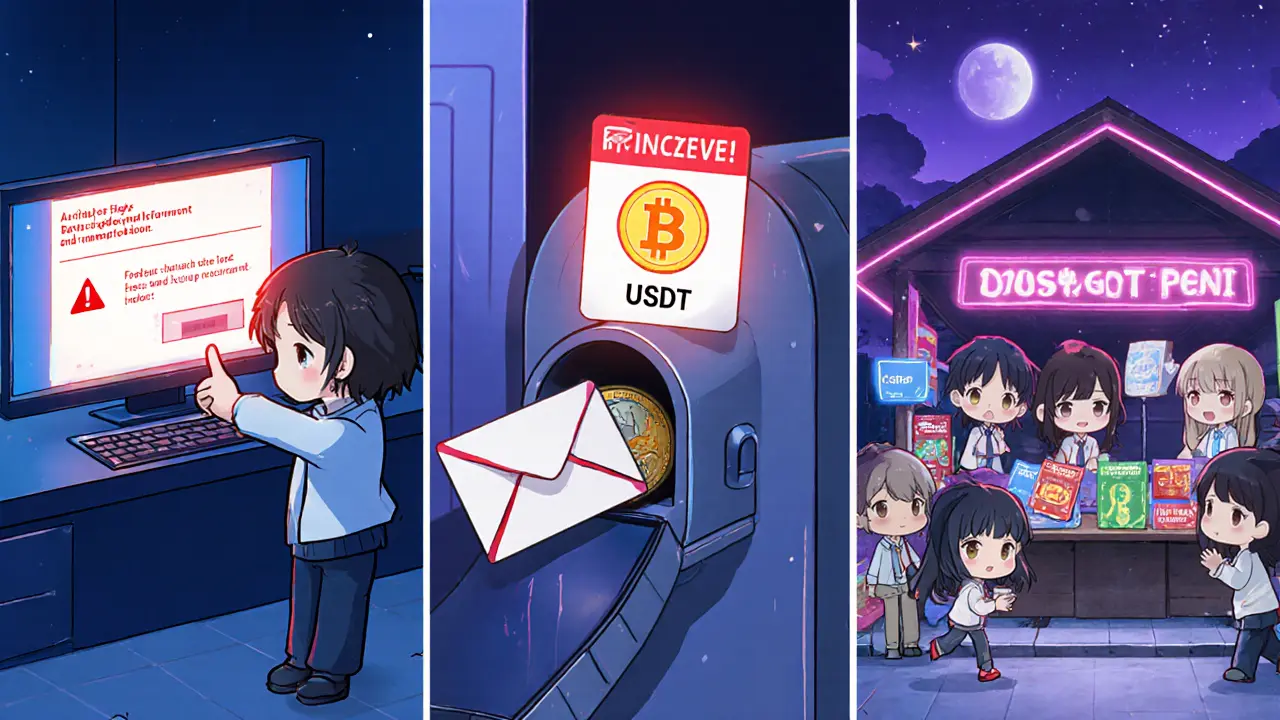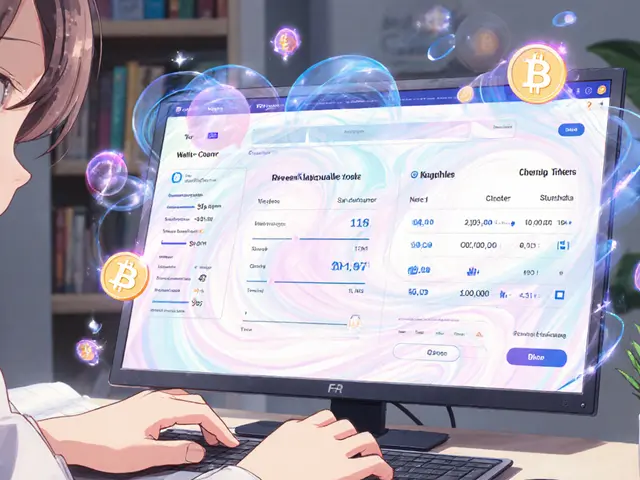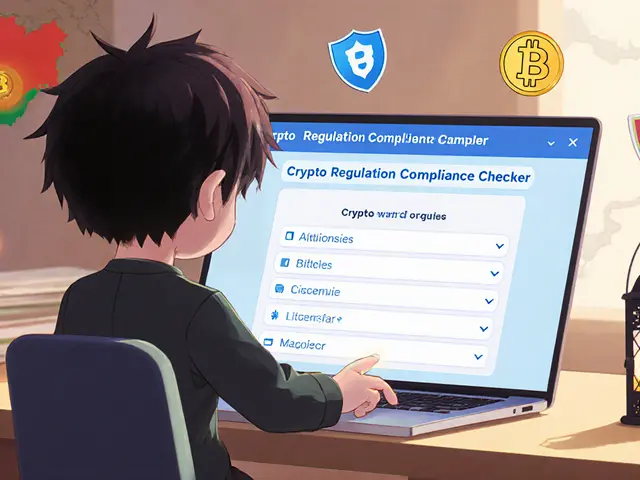When a country tells banks they can’t touch crypto, the whole ecosystem feels the shock. Ecuador banking ban on cryptocurrency transactions is a multi‑layered rule‑set that stopped banks from processing any digital‑asset transfer, yet it left everyday Ecuadorians to figure out how to move, trade, or cash out their crypto without a bank’s help.
What the law actually says
The ban rests on four pillars built between 2022 and 2025. First, Article 94 of the Monetary Code declares the US dollar the sole legal tender - a policy that’s been in place since the country’s dollarisation in 2000. Second, the Junta de Política y Regulación Monetaria y Financiera (JPRM) issued Resolution 001‑22 (Jan 2022) and Resolution 002‑23 (Mar 2023), both of which explicitly exclude cryptocurrencies from any authorized payment method.
Third, the Superintendency of Banks (SB) enforces the rule by maintaining a public registry of 47 unauthorized crypto‑service providers (as of July 2025) and by demanding that every financial institution install Transaction Monitoring System (TMS) Version 3.1. That system flags 47 specific transaction patterns such as transfers to Binance, OKX, or Mercado Bitcoin.
Finally, the Internal Revenue Service (SRI) taxes crypto gains - up to 35 % for individuals - but it does not criminalise private ownership. The result is a paradox: you can hold crypto, you can trade it peer‑to‑peer, but you cannot use a regulated bank to move that money.
How the ban is enforced on the ground
Bank compliance teams receive daily bulletins from the SB, urging them to block any transaction that matches the 47‑pattern list. In practice, Banco Pichincha - the country’s largest bank with a 38 % market share - automatically flags transfers above US$200 to known exchange wallets. A Reddit poll in July 2025 showed 87 % of 247 comments reporting account freezes that lasted between three and fourteen days for first‑time violators.
Sanctions are real. In 2024, twelve banks were hit with formal penalties totalling US$1.2 million for letting crypto‑related payments slip through. The SB also levies fines up to US$50 000 per breach of Article 144, which bans crypto‑denominated contracts and payments for goods or services.
Because the ban targets the banking channel, not the crypto itself, most users turn to offshore platforms, peer‑to‑peer (P2P) markets, or workarounds that slip under the radar.
Workarounds - how Ecuadorians keep the crypto flow alive
One of the most common tricks is converting crypto into a stablecoin like USDT, then sending the stablecoin as if it were a regular US $ transfer. Around 74 % of users in a CoinGecko forum said they do this before attempting a bank‑linked move. When the transfer is mislabeled as a normal USD payment, the bank’s filter sometimes lets it pass - but the risk of a chargeback is high; Q2 2025 recorded 147 user‑reported cases where funds were frozen, amounting to US$382 000.
Other tactics include:
- Gift‑card exchanges (22 % of OTC volume) - you sell crypto for a local gift card, then cash it out.
- Pre‑paid dollar cards issued by non‑bank entities (17 % of volume) - these cards can be loaded via crypto and used like cash.
- Cross‑border payment services such as Wise or PayPal, which do not explicitly forbid crypto‑derived funds (31 % of volume).
Each workaround adds friction. The Digital Rights Foundation measured an average fee of 4.8 % on these alternative routes, compared with just 1.2 % in crypto‑friendly jurisdictions like Colombia.

Market impact - numbers that tell the story
Even with the ban, an estimated 385 000 Ecuadorians (2.2 % of the 17.6 million population) hold crypto. The World Bank’s June 2025 Digital Economy Assessment puts the total crypto market value at roughly US$185 million - just 1.1 % of the Latin American total.
Remittances dominate: 68 % of crypto‑related transaction volume is tied to money coming from abroad, mainly because traditional remittance fees hover around 6.5 %. A Brookings paper by Dr. María Fernanda Espinosa estimated the ban costs the country about US$18 million each year in missed blockchain‑based savings.
Venture capital is scarce. Crunchbase data shows only US$12.7 million flowed into Ecuadorian blockchain startups in 2024, versus US$210 million in Brazil. Mining is growing - MEXC reported 1 023 registered mining operations in 2025, but the SB confirmed none have formal banking relationships, forcing them to use higher‑cost third‑party processors.
Future outlook - could the ban soften?
Two forces could reshape the landscape. First, the Central Bank of Ecuador (BCE) announced a prototype Central Bank Digital Currency (CBDC) in its March 2025 Innovation Report, with testing slated for Q4 2025. If the CBDC integrates smoothly, it might create a state‑backed digital alternative that coexists with private crypto, potentially easing pressure on the ban.
Second, legislative change is on the table. Bill 6538, introduced by Assembly member Shirley Rivera, proposes a licensing regime for crypto exchanges - minimum capital US$500 000, mandatory reserve audits, and real‑time monitoring through the Financial Analysis Unit (UAF). Analysts at the Andean Financial Review expect at least an 18‑month lag before any law takes effect.
International bodies are watching, too. The IMF’s 2025 Financial Sector Assessment flagged “regulatory arbitrage” concerns, noting that 63 % of crypto trades were happening on unregulated Telegram OTC desks. Chainalysis predicts a softening of restrictions by 2026 as financial inclusion pressures mount - 42 % of Ecuadorian adults remain unbanked, according to the World Bank’s 2025 Global Findex.

Practical checklist - what fintechs and users should do today
Whether you’re a startup, an investor, or an everyday user, here are the steps that keep you on the right side of the law while staying active in crypto.
- Verify AML/KYC compliance. All fintechs must cross‑check customers against the National Registry of Persons (RENAP). Expect an average onboarding time of 17 business days.
- Install the SB‑mandated TMS 3.1 and configure the 47 crypto‑pattern filters. Failure to do so can trigger a US$50 000 fine.
- Maintain a clear audit trail for every crypto‑related transaction - even peer‑to‑peer trades. The SRI may request proof of source for tax filings.
- For users: keep a diversified set of exchange accounts (average Ecuadorian holds 3.2) and limit each to small amounts (under US$200) to avoid automatic flags.
- Consider stablecoins as a bridge, but label transfers as regular USD payments only when you’re absolutely sure the receiving bank’s system won’t flag the wallet address.
- Watch legislative updates. Bill 6538 could open a licensed exchange route, which would dramatically simplify bank interactions.
Frequently Asked Questions
Is it illegal for an Ecuadorian to own crypto?
No. The ban only covers financial institutions. Private individuals can hold, trade, and use crypto on peer‑to‑peer platforms without criminal penalties.
What happens if my bank flags a crypto transaction?
The bank will usually freeze the account for 3‑14 days on a first offense. Repeated violations can lead to fines up to US$50 000 and a permanent ban from the institution.
Can I convert crypto to cash without a bank?
Yes. Popular methods include P2P platforms, gift‑card exchanges, and prepaid dollar cards. Each method carries higher fees (around 4‑5 %) and requires careful verification of counterparties.
Will the proposed licensing bill change the ban?
If passed, Bill 6538 would allow licensed exchanges to integrate with the banking system, effectively creating a legal pathway for crypto‑related transfers. The bill is still in committee, so change won’t happen before late 2026 at the earliest.
How does the CBDC project affect private crypto?
The CBDC is designed as a state‑issued digital dollar. If it gains wide adoption, it could reduce the need for private crypto as a means of digital payment, but it won’t directly legalise private crypto transactions unless the government revises the current ban.
Key takeaways
- The ban targets banks, not private crypto ownership.
- Compliance hinges on the SB’s TMS filters and the JPRM resolutions.
- Most users rely on stablecoins, P2P trades, and non‑bank payment services.
- Market size remains modest (≈US$185 M) but is growing through remittances and mining.
- Legislative and CBDC developments could soften restrictions by 2026‑2027.







Manish Gupta
October 25, 2025 AT 09:35The ban really shows how regulators can choke off innovation 😅
Sarah Hannay
October 29, 2025 AT 10:51The government's stance, while ostensibly aimed at financial stability, appears to disregard the legitimate needs of citizens who rely on crypto for remittances. It is incumbent upon policymakers to balance risk mitigation with the socio‑economic realities of a largely unbanked populace. Such a heavy‑handed approach may ultimately erode public trust in financial institutions.
Prabhleen Bhatti
November 2, 2025 AT 12:08From a regulatory compliance perspective, the enforcement of Resolution 001‑22 and 002‑23 constitutes a paradigm shift in the monetary governance of Ecuador; the interplay between the SB’s Transaction Monitoring System and the JPRM’s policy framework creates a multifaceted compliance matrix, replete with 47 distinct transaction signatures that must be meticulously surveilled. Moreover, the tax code’s 35 % capital gains provision adds an additional layer of fiscal scrutiny, compelling entities to adopt robust KYC/AML protocols. Practitioners must therefore recalibrate risk assessment models, integrate real‑time monitoring analytics, and navigate a labyrinthine ecosystem of sanctioned and unsanctioned channels. The resultant friction not only augments operational overhead but also catalyzes the emergence of decentralized workarounds, thereby paradoxically fostering the very off‑chain activity the ban seeks to suppress.
Elizabeth Mitchell
November 6, 2025 AT 13:25Interesting read. It seems many people are just finding creative ways to keep the crypto flow going despite the banking restrictions.
John E Owren
November 10, 2025 AT 14:41Keep your eye on the compliance checklist and stay disciplined; the penalties are steep, but with diligent planning you can navigate the system without triggering the SB’s alarms.
Joseph Eckelkamp
November 14, 2025 AT 15:58Oh great, another brilliant move by the authorities – because nothing says ‘financial innovation’ like a blanket ban that forces everyone into a maze of offshore wallets, hidden P2P trades, and costly gift‑card swaps. Brilliant, truly.
Jennifer Rosada
November 18, 2025 AT 17:15It is imperative that we, as responsible citizens, denounce policies that impede lawful financial autonomy while championing transparent, equitable frameworks that uplift the underserved. The current ban, albeit legally permissible, raises profound ethical concerns regarding access to modern financial tools.